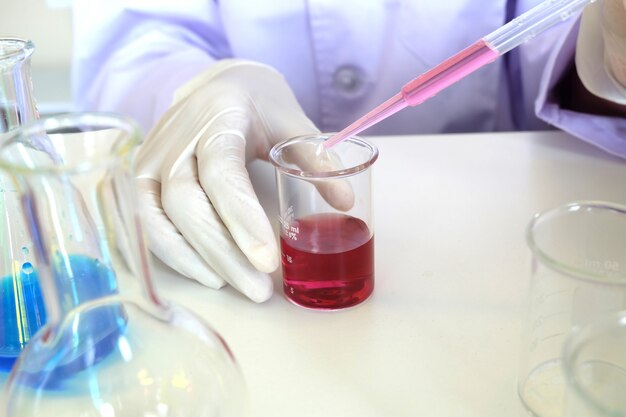Understanding Quarts and Milliliters: Fundamental Volume Units
Quarts (qt) and milliliters (ml) are essential units for measuring liquid volume, but they belong to different systems. Quarts are part of the Imperial and U.S. customary systems, historically used for larger volumes like beverages or cooking ingredients. In contrast, milliliters are a metric system unit, ideal for precision in scientific, medical, or culinary contexts due to their small size. Recognizing this distinction is critical for accurate conversions, especially in international settings where metric units dominate. The quart itself has two variations—the smaller U.S. quart and the larger Imperial quart—though the U.S. standard is most commonly referenced today. Milliliters, however, are universally standardized, making them indispensable for consistency across fields like chemistry or pharmaceuticals.
The Exact Conversion Factor: Bridging Quarts and Milliliters
The cornerstone of converting quarts to milliliters lies in a precise conversion factor: 1 U.S. liquid quart equals 946.353 milliliters. This value derives from the metric definition of a liter, where 1 liter = 1.05669 U.S. quarts. Consequently, since 1 liter contains 1,000 ml, dividing 1,000 by 1.05669 yields the milliliter equivalent of one quart. For practical purposes, this is often rounded to 946 ml per quart, though high-accuracy fields (e.g., laboratory work) retain the full decimal. Note that Imperial quarts differ—1 Imperial quart ≈ 1,136 ml—but this article focuses on the U.S. standard unless otherwise specified. Memorizing this factor eliminates guesswork and ensures reliability across applications.
Step-by-Step Conversion Process: From Quarts to Milliliters
Converting quarts to milliliters involves a straightforward mathematical calculation. First, identify the number of quarts you need to convert. Multiply this quantity by 946.353 (the exact conversion factor) or 946 for everyday use. For example, to convert 2.5 quarts to ml:
2.5 qt × 946.353 ml/qt = 2,365.8825 ml (≈ 2,366 ml when rounded). Always verify whether your task requires exact precision or tolerates slight rounding. In recipes, 946 ml per quart suffices; in drug dosage, use the full decimal. For batch conversions, leverage spreadsheet formulas (e.g., =A2*946.353 in Excel) to automate calculations and minimize human error. This systematic approach guarantees accuracy whether scaling soup recipes or calibrating industrial fluids.
Practical Applications: Where Quart-to-Milliliter Conversions Matter
Culinary arts heavily rely on these conversions, especially with international recipes. A soup requiring 3 quarts of broth translates to 2,839 ml (3 × 946.353), ensuring precise flavor balance. In scientific laboratories, reagents might be packaged in quarts but used in milliliter increments; converting 0.75 quarts to 709.765 ml prevents experimental inaccuracies. Manufacturing and engineering also demand these shifts—e.g., converting engine coolant volumes from quarts to milliliters for compatibility with metric schematics. Even everyday tasks like filling a 5-quart countertop ice maker (≈ 4,732 ml) benefit from this knowledge. Embracing conversion fluency bridges measurement gaps across hobbies and professions.
Avoiding Common Conversion Errors and Ensuring Accuracy
Mistakes in quart-to-milliliter conversions often stem from three pitfalls: confusing U.S. and Imperial quarts, misplacing decimals, or using outdated approximations (e.g., 1 qt = 950 ml). Always confirm the quart type—U.S. vs. Imperial—before calculating. Decimal errors arise when moving between units; double-check multiplication, especially with fractions (e.g., 1.25 qt = 1.25 × 946.353 = 1,182.941 ml). Additionally, verify tool settings; some apps default to Imperial quarts. For critical tasks like medical dosing, cross-verify results with a pharmacist or digital converter. Recording conversions with units (e.g., “946 ml/qt”) on your workspace reinforces attention to detail.
Helpful Tools and References for Effortless Conversions
Simplify conversions with digital tools like unit converter apps (e.g., UnitConverters, ConvertAll) or Google’s built-in calculator (search “2 qt to ml”). For offline scenarios, keep a printable conversion chart:
1 qt = 946 ml 2 qt = 1,892 ml 3 qt = 2,838 ml 4 qt = 3,784 ml 5 qt = 4,730 ml
Bookmark trusted online references like the NIST Handbook 44 for official conversion standards. In kitchens, use dual-scale measuring cups displaying both quarts and milliliters. These resources mitigate calculation stress, making conversions accessible even during time-sensitive tasks.
Conclusion
Converting quarts to milliliters transcends mere arithmetic—it’s a skill fostering accuracy in an increasingly metric world. Whether adapting a family recipe, administering medication, or documenting scientific data, precise conversions ensure safety, consistency, and reproducibility. By internalizing the 1:946.353 ratio and leveraging modern tools, you navigate seamlessly between measurement systems. This proficiency not only enhances personal efficiency but also aligns with global standards, promoting clarity in collaboration across borders and disciplines.
Frequently Asked Questions: Quarts to Milliliters
Q: Why are there 946.353 ml in a quart?
A: This stems from the U.S. gallon definition (128 fl oz) divided into 4 quarts. Since 1 gallon = 3,785.412 ml, dividing by 4 yields 946.353 ml per quart.
Q: How do I convert 1.5 quarts to ml?
A: Multiply 1.5 by 946.353:
1.5 × 946.353 = 1,419.5295 ml ≈ 1,420 ml (rounded for practicality).
Q: Are milliliters and cubic centimeters (cc) the same?
A: Yes! 1 ml = 1 cc. This equivalence is useful in medical or automotive contexts (e.g., 5 qt engine oil ≈ 4,732 ml/cc).
Q: Is a quart always larger than a liter?
A: No. 1 U.S. quart ≈ 0.946 liters, making it smaller than 1 liter (1,000 ml). An Imperial quart (~1.136 L), however, is larger.
Q: How can I mentally estimate quarts to ml?
A: Use the approximation “1 quart ≈ 950 ml” for quick estimates. For 3 quarts, 3 × 950 = 2,850 ml (vs. exact 2,839 ml). Adjust precision as needed.
Q: Why do U.S. and Imperial quarts differ?
A: Historical measurement variations led to distinct gallon definitions. The U.S. gallon (3.785 L) derives from 18th-century wine gallons, while the Imperial gallon (4.546 L) evolved from British standards.
Q: Can I convert dry quarts to ml the same way?
A: No. Dry quarts (U.S.) measure volume for solids (e.g., grains) and equal ≈ 1,101 ml. Use liquid quarts (946 ml) for fluids unless specified otherwise.

